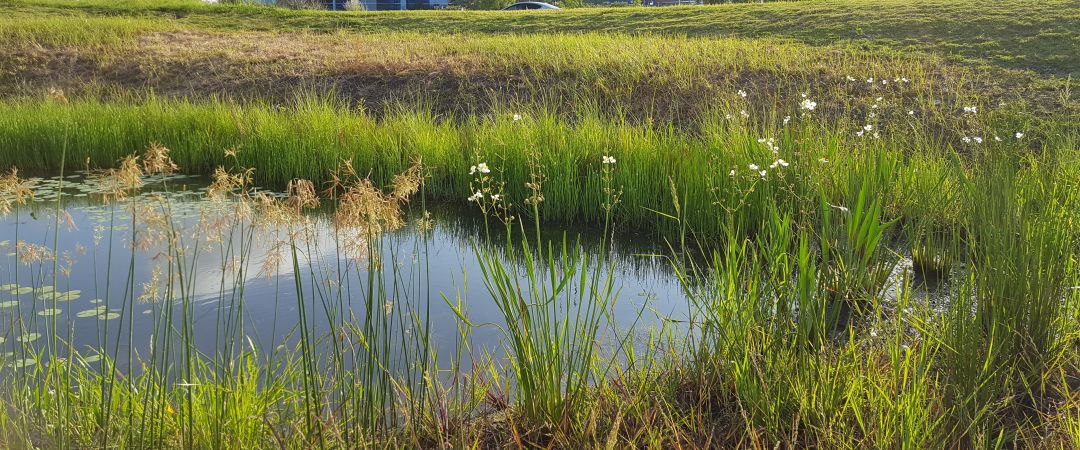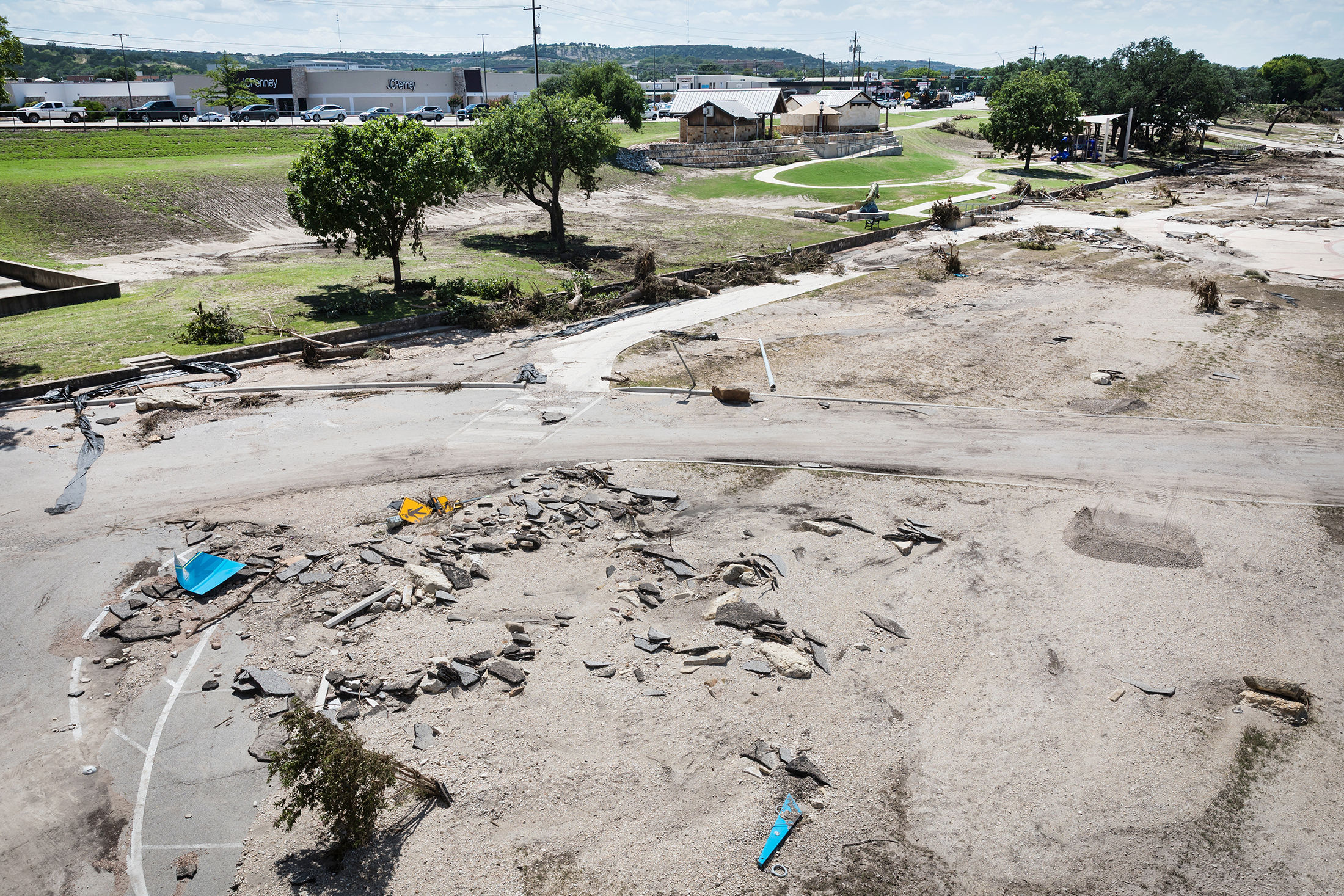What the Houston Botanic Garden Will Teach Us About Natural Flood Control

Natural stormwater detention in Houston.
We Already know Some things about the Houston Botanic Garden, our city’s forthcoming and first-ever botanic garden. We know it’s situated on 120 acres along Sim’s Bayou near the Hobby area, and that it’s planning to open by late 2020. We also know that for the past year, it's been revealing the first phase of its master plan, Botanic Beginnings, which will include loads of gardens with a global collection, edible plants, a children's discovery garden, and more.
Now we also know more about its forthcoming Stormwater Wetlands Garden, another part of the master plan's first phase, which aims to show Houstonians how natural flood mitigation is possible (and necessary) for our city.
The garden will transform detention basins along Sims Bayou on its property into five acres of functioning stormwater wetlands. When it debuts next year, as a collaboration with the Texas Community Watershed Partners and funded by the Texas General Land Office Coastal Management Program, the wetland area will see water levels rise and fall with rain, while also retaining stormwater for 96 hours—ah, yes, a natural sponge. As the water filters through the plants and soil, pollutants, bacteria, and metals will be pulled from the water before cycling back out, nitrogen will be absorbed, and oxygen released.
Deep water pockets will be constructed in the garden to ensure a minimum level of water remains at all times, thus attracting wildlife. You'll be able to spot plenty of birds, amphibians and fish in the garden—including the ever-helpful ones that gobble up mosquitos—due to this constant water source.
Because educational programming is a huge part of the botanic garden's vision, visitors will be able to learn about the importance of having wetlands as our natural barrier against flooding, as well as the many native plants and trees shown to thrive in such an ecosystem—bald cypress trees, pickerel weeds, arrowheads, and grasses including maidencane and cordgrass—and how you can incorporate them into your own lawn (pocket prairies are so the next big thing, Houston).
Sure, detention basins and ponds are common in Houston, but the garden will present an idea of how a wetland ecosystem can be integrated into such spaces to enhance our protection against flooding. And since we're now almost two years out from Harvey, and people appear to be growing less concerned with flooding as one of our city' biggest problems, perhaps we could use this gentle reminder.
Want to get involved? The garden is hosting volunteer and education events for the public, including tree plantings and hands-on workshops. Head to hbg.org to find out more.




